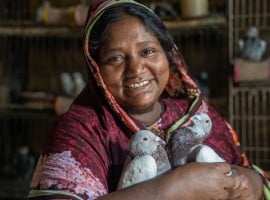
Read our 2024 annual report

Knowledge Hub
Chickens, sheep, cattle, pigs, donkeys, and camels all play an important role in the global livestock line-up, but we are here to posit the case that this hairy horned hoofer is, in fact, the greatest of all time.
Millions of the people we work with around the world depend in some way on livestock for food, income, traction, or travel. We've already paid our dues elsewhere to the indefatigable donkey and the incredible camel, but for sheer ubiquitousness and all-round functionality, there's really nothing to compare to Capra hirscus, also known as the goat.
Goats were among the first animals to be domesticated by humans, around 10,000 years ago in the Fertile Crescent region of the Middle East, which today encompasses Iraq, Israel, Jordan, Lebanon, Palestine, and Syria. Today, they are present on every continent in the world, except Antarctica, and recent estimates put their global population at around 1.1 billion. But, honestly, who’s counting?
Goats come in all shapes and sizes. The FAO reckons there are over 1,000 different breeds worldwide, ranging from the shaggy Damascus Goat to the sleek Kalahari Red to the small hardy Spanish Goats popular in Haiti. This diversity reflects the adaptability of goats to various environments and their importance in agriculture across different regions. Then of course there’s the legendary Myotonic Goat, made famous by an endless stream of viral videos demonstrating its unique trait of “fainting” when startled.
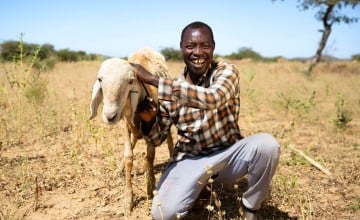
Popular lore has it that goats will eat just about anything, from the crops in your field to the shirt on your back. In real life though, they’re actually quite picky eaters. Their preference is for shrubs, weeds, and vines, which makes them well suited to the often-inhospitable environments in which Concern works. Often, they will eat plants that are toxic to other animals. Having said all that, goats are naturally curious animals, so if they see something vaguely food-like they’ll probably give it a bit of a chew, just in case.
Their reputation for sturdiness and survival, along with their value in human nutrition makes goats the most popular of all the four-legged food sources in low and middle-income countries. They can breed twice in a calendar year, with twins being the usual result. Baby goats are called kids, but they don’t get much time to enjoy childhood, as puberty can begin as early as three months. Generally though, owners tend to wait until does (females) are about a year old before breeding.
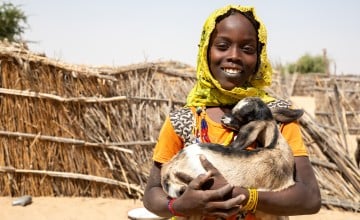
If they’re lucky, goats will live to the ripe old age of 18, but of course that’s not always the case. Goat meat is a valuable source of protein, especially among communities who don’t have the resources to own larger animals, such as cattle. Thankfully, it’s their milk and associated dairy products that are the most valuable source of food for humans. Goat’s milk is rich in essential nutrients, including calcium, magnesium, potassium, and vitamin A. It’s easier to digest than cow’s milk, is naturally homogenised, and can be turned into cheese, yoghurt, and butter.
Concern the Goat
Concern has a long and storied history with goats. Across four continents our colleagues have helped countless communities with their goat husbandry needs, and it’s fair to say this is the quadruped with which we are most familiar. Indeed, there have been many, many goats who bore the name “Concern”, in tribute to the organisation that provided them.
Providing goats to families living with extreme poverty is extremely impactful. Sometimes it will be a pregnant doe, bringing the prospect of a family. Often we will ask that one of the offspring will be passed on to another family in the community, meaning it's the gift that keeps on giving. Another approach is to loan a pregnant doe to a family, who then return it once the kids have been born and weaned. There are many ways to spread the goat love, and we've done them all.
That being said, it’s never simply a case of doling out goats and riding off into the sunset. Many families might not be familiar with advanced husbandry techniques, or with rearing goats at all. We will always work to provide training, information, and resources, often through local authorities or partner organisations. This generally includes help and advice on building secure, raised structures in which our goat friends can securely spend their nights, safe from prowling predators.
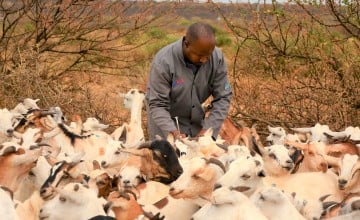
The impact on people's lives is plain to see, just by talking to them. Marie-Claire Ayinkamiye in Rwanda told us "When the goats have kids, I will keep some and sell the rest. Then I will be able to afford a sewing machine." It may not sound like much, but that can be a life changing investment.
Ndafeladzina Petulo in Malawi says the two goats provided to her by Concern have produced four kids, which she plans to sell for enough money to buy a cow. In Somaliland, the goat population was devastated recently by a four-year drought and Abdi Jama lost 75% of his herd. But with support from Concern, his community have built a new water system, which he hopes will keep his precious herd alive through the next drought.
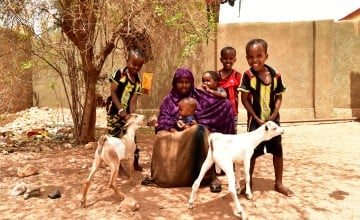
A precious gift
Of course, goats are not invincible, and they can also fall ill or get injured. Encephalitis, mastitis, pneumonia, lymphadenitis, and other bacterial infections or parasitic infestations can cause serious problems. There’s even something called enterotoxemia, also known as overeating disease, which can be fatal. Concern teams who work with rural and livestock-focused communities often support activities designed to improve the health and wellbeing of goats. Mass vaccinations can be very effective at controlling disease and we do a lot of those.
So, in summary, goats don’t ask for much but they have a lot to give, especially in places where resources are tight. Give them a scrummy feed of thorny branches and a good drink of water and they’ll be as happy as a clam.
Tens of millions of families in some of the most economically and environmentally challenged locations on Earth rely on goats as a staple source of nutrition. They are a smart, sure-footed marvel of evolution and, in our humble opinion, fully deserving of the accolade Greatest Of All Time. All hail the GOAT.




